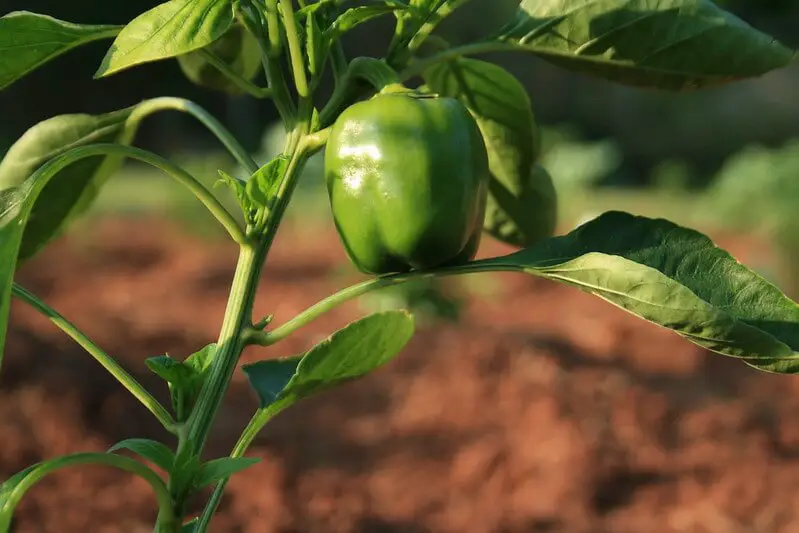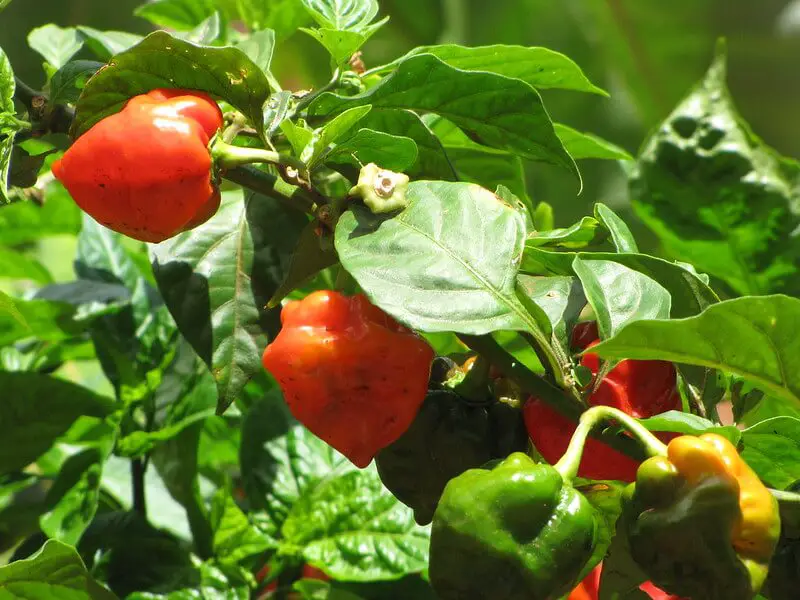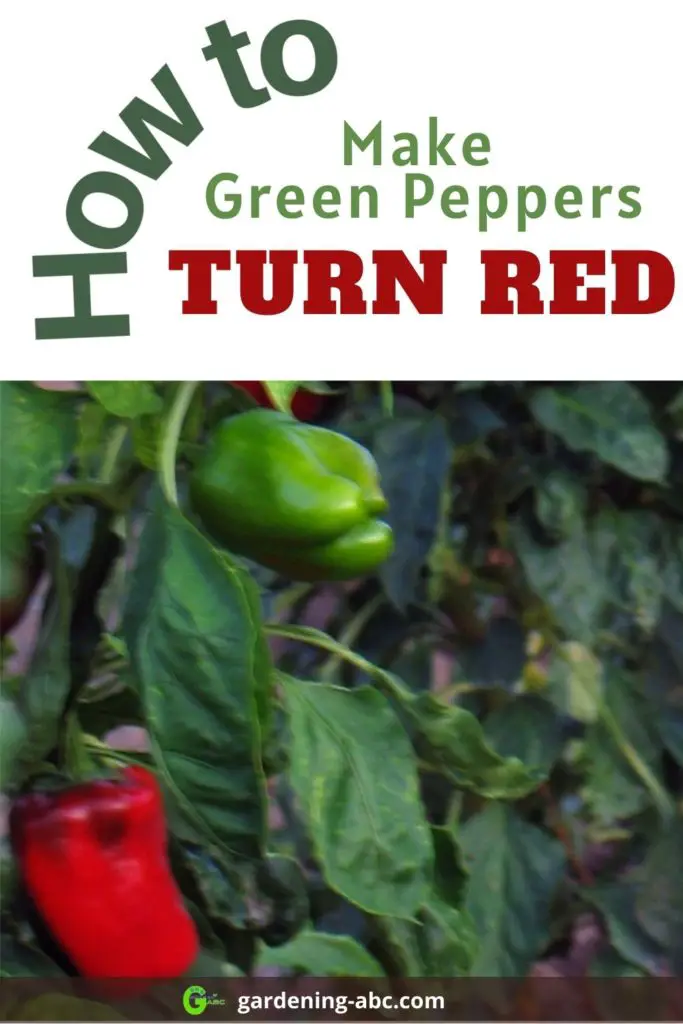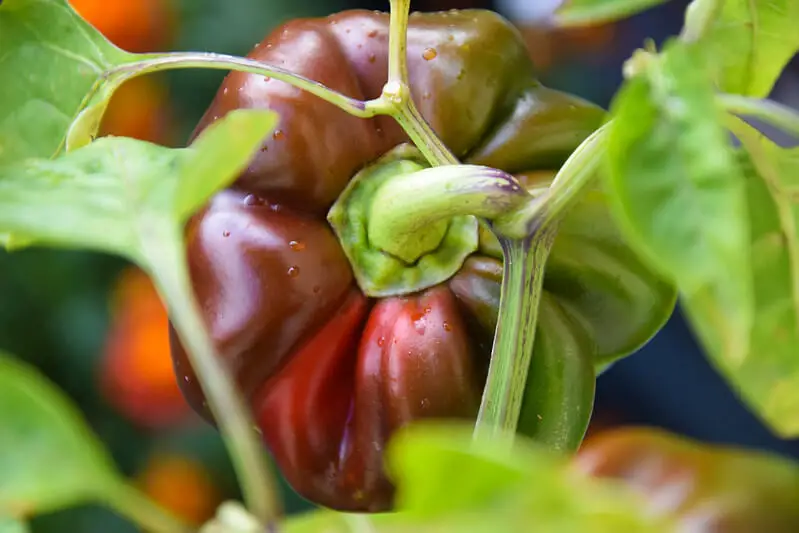We use affiliate links to run our site. When you buy through links on our site, we may earn an affiliate commission, without any added cost to you. Learn more
Green bell peppers are unripe; red bell peppers are ripe. That’s the way it’s supposed to be. But what if your bell peppers are staying green, even after you’ve picked them from the vine? Is something wrong? Nope!
If you’re one of the many gardeners who’ve been disappointed by bell peppers that refuse to turn red, don’t give up hope. There are a few things you can do to encourage your peppers to develop their full color.
At the early stage, all the peppers are green. Once they start ripening, they change their colors. A fully mature bell pepper usually turns red. Green bell peppers are cheaper than red and yellow ones as they are unripe and not as sweet.
Generally, peppers take quite a bit of time to ripen. But if the plant is somehow disturbed or doesn’t get its ideal conditions, it’ll take even longer to ripen. Interestingly, there are certain pepper varieties that never turn red.
What Can You Do to Get Peppers to Turn Red?
Well, the thing you need the most here is patience. Just leave the plant for some more time than you are currently doing, and let the fruits ripen.
Your seed packet might be saying that 6 weeks is the ideal time for getting bell peppers, but to get them to fully ripen, you might need to wait for a couple more weeks.
If you are in a hurry, choose the small-sized varieties, because the larger the size of the bell pepper longer it will take to be fully ripe.


How Long Does It Take for Green Bell Peppers to Turn Red?
Bell peppers need 70-80 days (after transplanting) to reach a mature green stage and an additional 2-3 weeks to turn red. This time period is not absolute and can change depending on the variety.
When you pick bell peppers prematurely, they do not get all the natural sugars that peppers would normally get from the ripening process. This is why a green bell pepper has a more bitter taste than Red, Orange, or Yellow Bell Peppers.
A detailed guide on how to grow Bell Peppers at home.
Can Green Bell Peppers Turn Red After Picking?
Ideally, you should leave the bell peppers on the plant till they turn red. But if you already picked the pepper in green condition, leave them on a sunny windowsill in a warm room (65°F to 70°F) for a few days.
In sunlight, they will change their colors and will eventually turn red. Storing them at 55°F or below slows down the ripening process to three or four weeks.
Once the bell peppers turn red, use them or store them in the refrigerator.
- HANDS-FREE GARDENING- No one likes juggling tools or running back…
- INNOVATIVE EMPTYING POUCH- Lined with water-resistant ripstop…
- MULTIPLE POCKETS, UNIQUE DESIGN- This apron offers three small…
Not All Bell Peppers Will Turn Red
Some pepper varieties will never turn red even after they mature fully. Some peppers can even turn white or purple, or yellow. This doesn’t mean they are not suitable for eating.
You can eat bell peppers at any stage of their life, but for the color change, the breakdown of the chlorophyll needs to happen.
Which Bell Pepper is The Best for Consumption?


Red bell peppers have the most nutrition, as they’ve been on the vine the longest.
Green peppers are harvested earlier before they have a chance to turn yellow, orange, and then red.
Typically, one red bell pepper has almost 11 times more beta-carotene and 1.5 times more vitamin C compared to the same-sized green bell pepper.
- EXTREMELY FLEXIBLE – All weather flexibility
- EXTREMELY DURABLE – Abrasion resistant outer cover and crush resistant anodized aircraft aluminum fittings
- HYBRID POLYMER – Won’t kink under pressure, coils easily and lays flat with zero memory
Conclusion:
In conclusion, bell peppers not turning red is a problem that can be solved with patience and time. With the right amount of sunlight and water, your bell peppers will eventually turn red. So don’t give up hope and keep tending to your plants!
I hope this post was helpful to you. If you like the information, don’t forget to share it with others, too.


Amazon and the Amazon logo are trademarks of Amazon.com, Inc, or its affiliates.


Hi there! My name is Prasenjit and I’m an avid gardener and someone who has grown a passion for growing plants. From my hands-on experience, I have learned what works and what doesn’t. Here I share everything I have learned.





